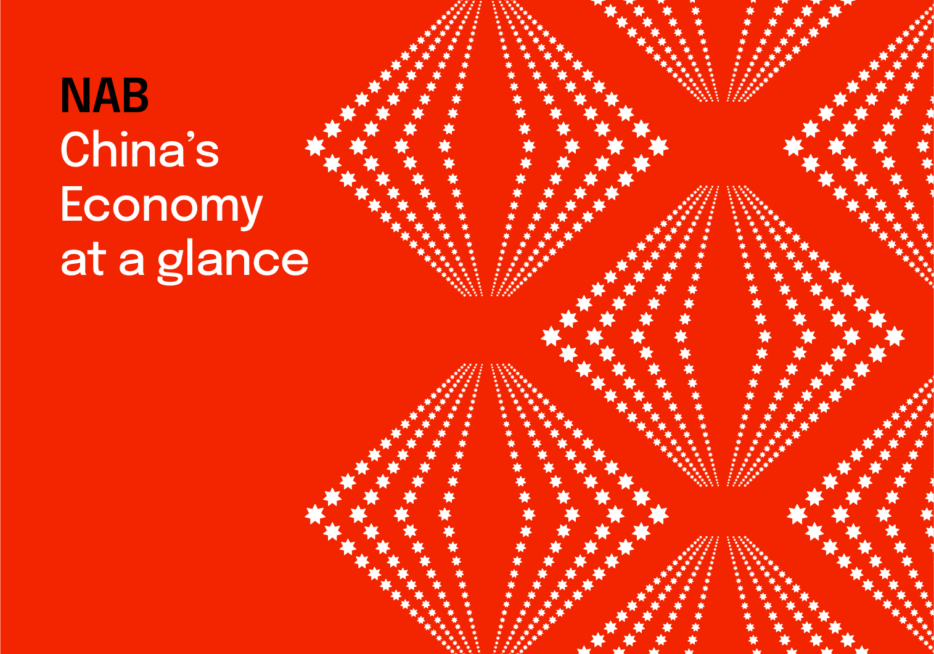China’s growth beat expectations in Q1, but big question marks around its sustainability

Insight
China’s rapid economic development and urbanisation have had a major impact on the health of city-dwellers. Changes in diet and lifestyle have triggered an increase in the incidence of chronic ‘western’ illnesses such as diabetes and coronary heart disease. And, while greater wealth, improved living conditions and access to better medical care are extending lives, an ageing population brings its own set of challenges.
“Countries like Australia have been managing these kinds of issues for many years now so it’s easy to see why the Chinese would want to tap into our experience,” says Tom Taylor, NAB Head of International Economics. “The recent free trade agreement signed by Australia and China will facilitate this flow of information and expertise.”
ChAFTA gives Australian healthcare providers greater access to Chinese consumers and allows service suppliers to establish wholly-owned hospitals and aged care institutions in China.
“The most obvious opportunities are for large and well-established hospitals, aged care facilities and pharmacies, but I believe there will also be openings for smaller businesses in areas such education, consulting and medical research,” says Taylor.
However, doing business with China can be a slow and complicated process. It’s important to be well prepared.
“China is a huge market but it’s still very competitive,” says NAB Health General Manager Nehemiah Richardson. “It’s vital that your business is operating as effectively as possible in Australia before you think of looking overseas. Many opportunities lie in joint ventures and partnerships so you should be prepared for someone to do very thorough due diligence on your company.”
China encompasses an immense range of cultures, lifestyles and incomes.
“In some areas, particularly the cities, the challenges within the healthcare system would look very familiar to us,” says Taylor. “But in the more rural areas there are still millions of people living on very low average incomes who have very different healthcare issues. You need to understand the nature of the problems China is facing to see how your offering can best meet their needs.”
Healthcare in China is a growing industry with evolving policies and structures.
“Australians have a lot of know-how in terms of setting up and running healthcare businesses in order to achieve desired outcomes,” says Richardson. “There are many ways of applying that knowledge and capability in China, from forming partnerships, capability swapping or direct investment in a local entity to setting up your own business.”
“NAB has people in China who focus on building relationships and understanding the context of healthcare right across Asia,” says Richardson. “The Department of Foreign Affairs and Trade and Austrade can also provide sound information and support.”
In China, business is built on face-to-face meetings, bonding and trust.
“You can’t expect to establish a business with phone calls and emails,” says Richardson. “The Chinese want to see evidence of commitment from the people they’re working with. Over time, trips will become less critical but don’t underestimate the number of visits you’ll need to make as you’re forging key relationships.”
For more information on the significant economic benefits to Australian households and businesses from a closer trading relationship with China, download the 2014 Australia-China Trade Report, co-produced by the Australia China Business Council and the University of Sydney, and sponsored by NAB.
Important information
Any advice contained above has been prepared without taking into account your objectives, financial situation or needs. Before acting on any advice, NAB recommends that you consider whether it is appropriate for your circumstances and that you review the relevant Product Disclosure Statement, Terms and Conditions or Financial Services Guide.
© National Australia Bank Limited ABN 12 004 044 937 AFSL and Australian Credit Licence 230686.
© National Australia Bank Limited. ABN 12 004 044 937 AFSL and Australian Credit Licence 230686.